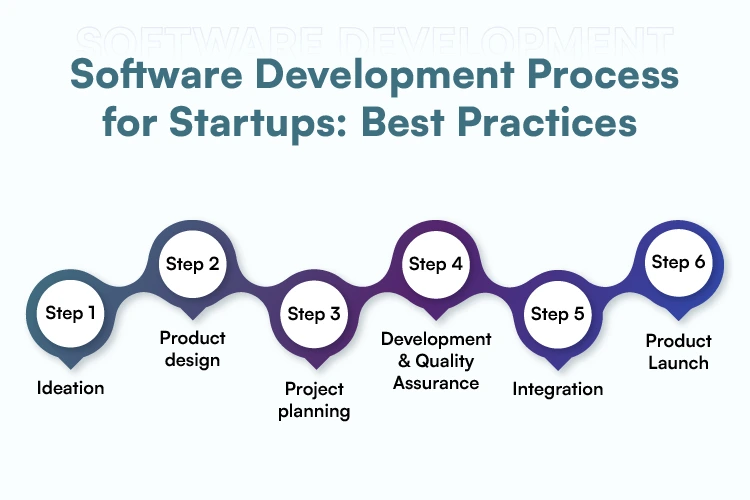As a startup, you are a new bug in this competitive industry, and you want to have and give the finest enhancement and experience for your business as well as your committed clients.
In terms of software, today every small and large-scale business has acquired some form of software for official use. Unfortunately, there are various excellent programs available to assist you in optimizing your job and making your business journey faster and more powerful.
Software development services, particularly for startups, can help you achieve your business objectives more quickly and efficiently. For example, software for startups can assist you in finding the proper team members, producing websites quickly, and many other things for which you must choose the best software applications.
However, in today’s digital jungle with thousands of software applications, it can be difficult to choose the ideal software for your firm. There is a dizzying array of options to pick from, but don’t worry! This blog on generating software applications for startups will help you understand the development process and select the appropriate tools for establishing software applications for startups.
What is Software Application Development?
The development of software is planned in stages and steps that culminate in the construction of functional software. Software application development refers to the process of creating, designing, testing, and deploying a software application from start to end. Enterprise software application development frequently necessitates the collaboration of various stakeholders and teams to plan, build, execute, and maintain a software application.
Software Development Process for Startups: Best Practices

Step 1 Ideation: We (Cuneiform Consulting) examine your company’s goals and those of your target market to identify the most fruitful market niche and adistinctive selling proposition that will set your product apart from the competitors. You will get a detailed plan outlining the product’s goals and intended features, as well as an estimate of how much time and money will be needed to complete the project.
Step 2 Product Design: Considering both your company’s needs and those of your target audience, we craft a product’s ideal collection of features, architecture, UX/UI, integration strategy, and technology stack. We never begin the development of a product without first obtaining client approval and then documenting all of the important technical decisions made throughout the design process. Cuneiform can also help you put together a whitepaper for investors and regulators if you’re looking to raise money from other sources.
Step 3 Project Planning: A detailed work breakdown structure, a communication plan, and a risk mitigation strategy are all introduced at this phase of the development project plan, along with the project’s objectives, deliverables, team members, and key performance indicators.
Step 4 Development & Quality Assurance: Our software experts build up development and delivery automation environments, store data, code the solution’s back end and APIs, and design user interfaces. We do tests concurrently with development to address any issues that arise.
Step 5 Integration: In this stage, we integrate the software product with your corporate systems and any third-party services that are required (for example, payment, messaging, and authentication). We do thorough integration testing to verify that data flows between connected systems are smooth and secure.
Step 6 Product Launch: We configure the infrastructure of the app, backup and recovery procedures, infrastructure security, and distribute the solution to end customers. We can also help you create a promotional website and upload your program to the appropriate app stores to expedite product release.
Software Development Methodologies:
When creating new software for a company, it is usual practice to employ a predetermined technique of project management known as a development methodology. Agile and Waterfall are the two most popular approaches to creating new software.
- Agile: An iterative method of project management that lets you work on several stages of the software development life cycle (SDLC) at once.
- Waterfall: The methodology is a method of project management in which each SDLC step is finished before moving on to the next.
What is a Software Development Life Cycle?

The Software Development Life Cycle (SDLC) is a systematic approach to making high-quality, cost-effective software in as little time as possible. The purpose of SDLC is to create top-notch software that precisely meets the needs of the client. Each phase of the SDLC is defined and outlined in detail, and it has its own associated procedure and set of deliverables.
The Five Core elements of the successful SDLC:
- Planning and defining product vision
- Estimating, Designing, and Prototyping
- Software Development in Short Sprints
- Presenting a demo of the product
- Agile iterations
Which is the best SDLC methodology for “Startups”?
Experts, according to studies, have agreed that the “Agile” style is best for startups. The emphasis of this methodology is on actually making usable software, rather than writing out every step of the way.
As a product development company, we understand that well-functioning software is more valuable than extensive documentation for non-functional software. When using an agile methodology, the development process may adapt to changing conditions. However, you should be mindful not to make modifications too frequently, as this will slow down the project’s progress.
Scrum and Kanban are the two primary approaches to Agile Methodology. They each adopt distinctive methods during the creation of a new product. Their main concern is allocating tasks to individual team members. One of the biggest benefits of the agile methodology for a startup with limited resources is its adaptability. It allows you to create working software, which can aid in finding suitable investors.
Scrum is a methodology for managing large amounts of work by dividing it into shorter periods of time called “sprints.” For instance, “Scrum” can be used to encourage continuous improvement and client input can be used to pinpoint problem areas when developing an e-commerce website for a startup.
Kanban: It helps new businesses track their development progress and spot problems. Utilizing KPIs like lead time and cycle time, teams may visualize their workflow with the help of Kanban boards. For instance, a startup is developing a new e-commerce website, and the development team is using “Kanban” to manage its workflow, with the use of a Kanban board to visualize the process.
Factors to consider, while choosing SDLC methodology for a Startup:
- Does the project demand a flexible chain of command?
- Do you intend to make upgrades to the software after its completion?
- Do you have fixed variables, or are you making decisions as the project progresses?
- Do you need developers to work simultaneously on different phases of the project?
- Are you relying on customer feedback to develop your software?
- Do you need a functioning version to pitch to investors?
- Do you intend to create customizable software?
Why Agile for Startups?
Startups encounter a range of hurdles, including limited resources, tight budgets, and frequently changing market demands. Following that, they must adjust rapidly to changing market conditions and accept consumer feedback.
Faced with these problems, agile proves to be the best option for companies. Agile values teamwork, frequent feedback, and continual progress.
In keeping with the MVP concept in software development, agile promotes incremental progress. It divides work into smaller, more manageable chunks, allowing companies to swiftly test and iterate on new ideas while decreasing financial risk and time loss.
Types of Software Development:
- Front-End Development: Front-end developers work on the product component with which users’ interface and user experience. UI and UX are the primary priorities of the developers. However, both UX and UI design focus on the layout, as well as the visual and interactive parts of an app. As a result, they also address issues and ensure that the UI and UX work in different browsers.
- Back-End Development: Back-end developers work with the parts of the product that users cannot see (back-ends). The back-end specialist creates the infrastructure that powers the application or program, focusing on functionality, system integration, and the basic logic of the software. They will also deal with the sophisticated underlying structure, which will ensure high performance, scalability, and security.
- Full-Stack Development: A full-stack developer is responsible for the entire product, including the front and back ends. To be a successful full-stack developer, you must have excellent programming skills as well as several soft skills required of all tech workers, such as problem-solving and critical thinking. At the end of the day, you and your team members are accountable for producing a complete, finished product.
- Desktop Development: These programmers produce apps for desktop operating systems such as Mac, Windows, and Linux. This is in contrast to developers who make applications for mobile, tablet, or other devices. Desktop development was more common in the early days of programming, particularly prior to the advent of mobile application software. They do, however, still exist and have a place in today’s landscape.
- Web Development: Developing for the web entails creating programs that run on a website. These apps are accessed by users from a wide variety of devices using web browsers. It’s a catch-all phrase for both front- and back-end programming.
- Database Development: Database administrator, who is in charge of daily database maintenance and troubleshooting as well as system implementation. A developer oversees developing the database, altering and designing existing or new applications, and ensuring that they meet the needs of the consumers.
- Mobile Development: A mobile developer creates applications that run natively on mobile devices such as smartphones and tablets. The developer focuses on either iOS or Android development, but not both. Because the tools, frameworks, and languages are distinct, they are more informed about the complexities of each sort of programming than individuals who dabble in both.
- Cloud Computing: Services, software, and apps that are delivered and run in the cloud are all a part of cloud computing. This means that they can be viewed from anywhere with an internet connection and the right credentials. Commonplace programs like Google Docs are examples of cloud-based software. They have many benefits, including the ability to grow as needed.
- DevOps Engineering: DevOps is an ideology and set of practices that prioritize the rapid, effective, and customer-centric distribution of software. This approach, which is like Agile, has gained popularity among teams of programmers all over the world. The experts take part in all stages, from design to quality assurance (QA) testing and finally, rollout. They need to be well-rounded in several areas, including coding, system integration, scripting, quality assurance testing, and more.
- Security Engineering: Security software professionals work to ensure the safety of diverse technical systems. They must be well-versed on the methodology, methods, tools, and patterns used by cybercriminals to hack software to aid in the prevention of such assaults.
Finally, it’s important to learn about the software development life cycle (SDLC) and how it applies to startups. New software projects can be developed with far less hassle, and the finest standards of software development can be maintained throughout. All of these elements are necessary for a startup to grow into a successful business and thrive in today’s cutthroat digital environment.
Cuneiform Consulting is a product development company that specializes in assisting startups with software development and offering the best software development solutions available. So, get your business off to a running start by picking the right product development strategy and company.





